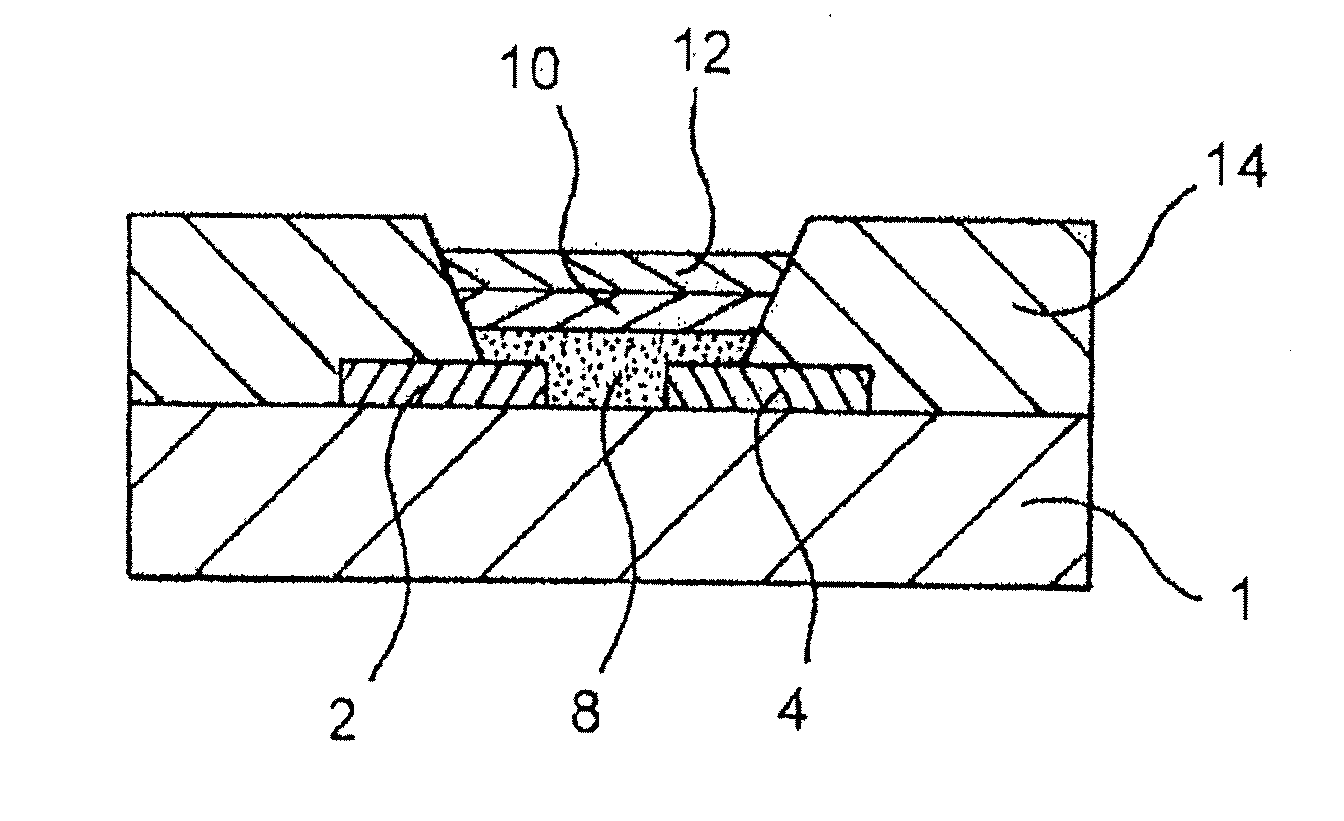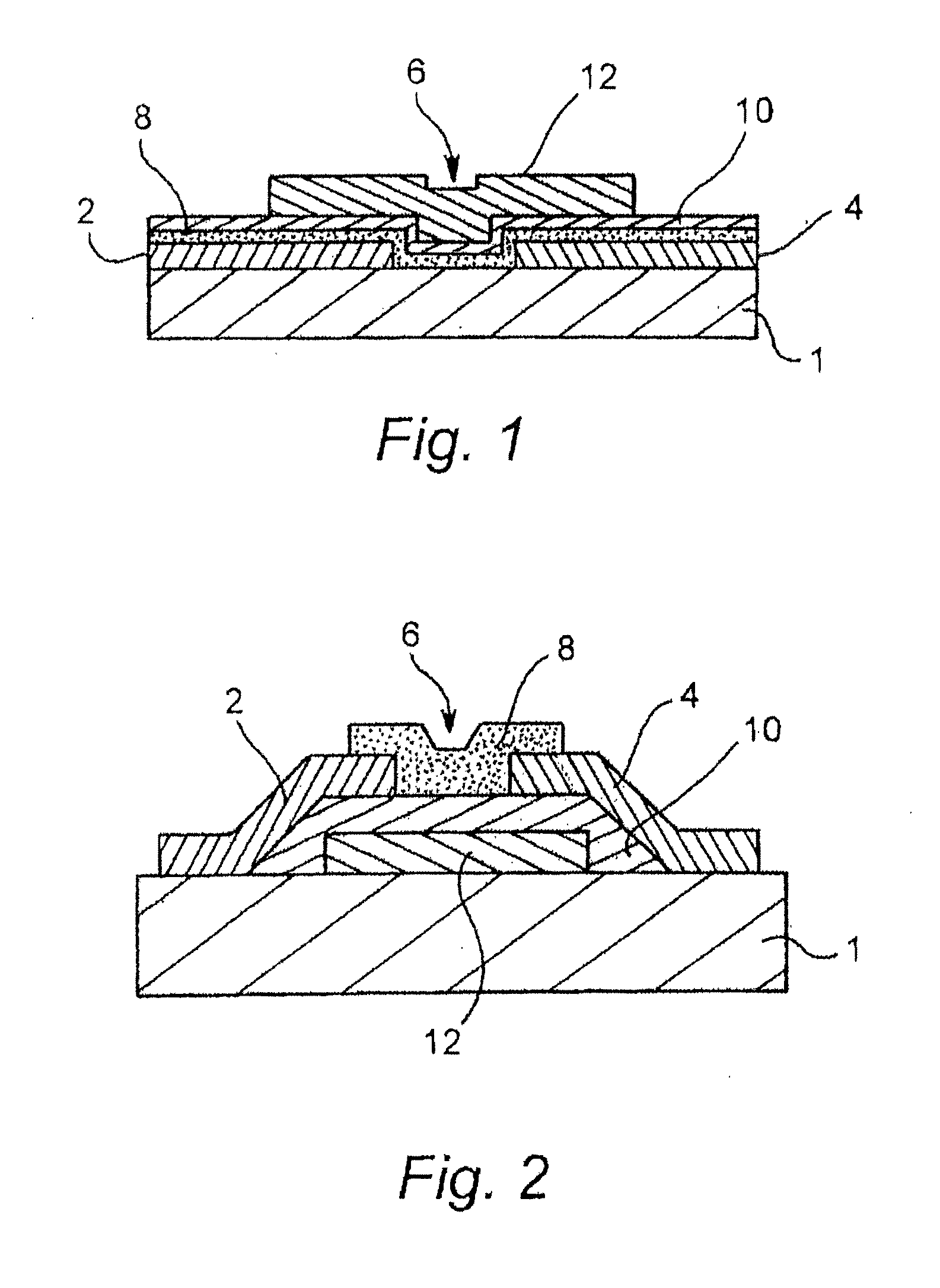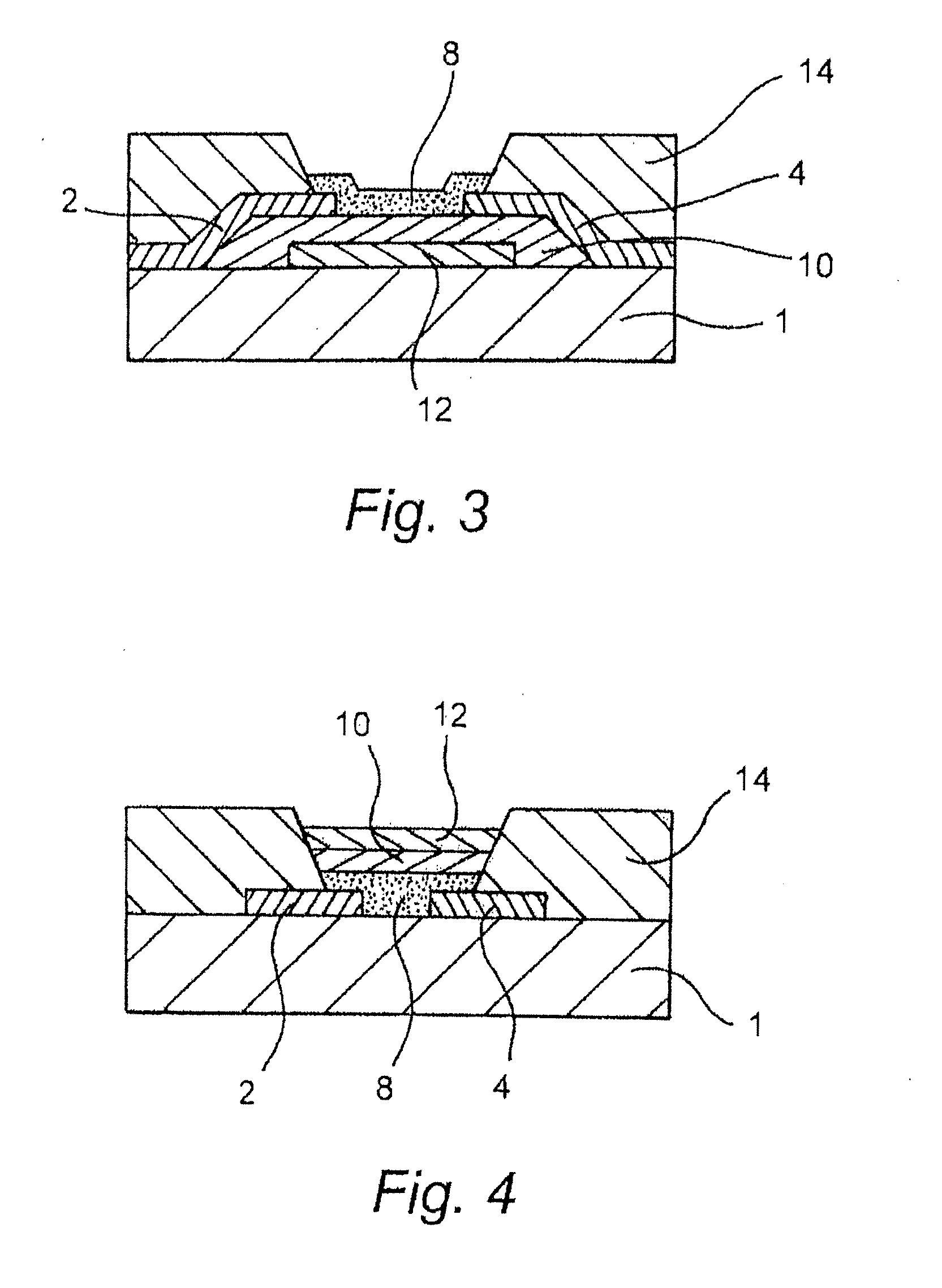Electronic Devices and Methods of Making Them Using Solution Processing Techniques
a technology of electroelectronic devices and processing techniques, applied in the direction of electroluminescent light sources, thermoelectric devices, electric lighting sources, etc., can solve the problems of increasing manufacturing time and complexity, increasing cost, and process not removing inorganic materials of the underlying layer, so as to improve increase the wettability of the surface, and reduce the wettability of the second layer of bank material
- Summary
- Abstract
- Description
- Claims
- Application Information
AI Technical Summary
Benefits of technology
Problems solved by technology
Method used
Image
Examples
Embodiment Construction
[0091]Embodiments of the present invention relate to printed electronic devices which comprise a patterned well-defining bank structure and methods of making the same. A double bank well-defining structure is formed by removing material from first and second bank layers in a single processing step whereby a step structure is formed due to a difference in removal rate of the material of the first and second layers.
[0092]FIG. 7 shows a double bank structure according to an embodiment of the present invention. The double bank structure is disposed on an electronic substrate 701 and comprises a lower layer 700 and an upper layer 702. The upper layer 702 has a positive profile and also overhangs the lower layer 700.
[0093]FIG. 8 shows the method steps involved in forming a double bank structure according to the embodiment of FIG. 7. First, a non UV sensitive resist 800 is spin coated on an electronic substrate 801 and soft baked (FIG. 8A). A positive photo resist 804 is then spin coated a...
PUM
 Login to View More
Login to View More Abstract
Description
Claims
Application Information
 Login to View More
Login to View More - R&D
- Intellectual Property
- Life Sciences
- Materials
- Tech Scout
- Unparalleled Data Quality
- Higher Quality Content
- 60% Fewer Hallucinations
Browse by: Latest US Patents, China's latest patents, Technical Efficacy Thesaurus, Application Domain, Technology Topic, Popular Technical Reports.
© 2025 PatSnap. All rights reserved.Legal|Privacy policy|Modern Slavery Act Transparency Statement|Sitemap|About US| Contact US: help@patsnap.com



